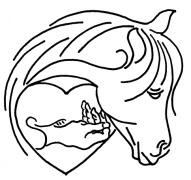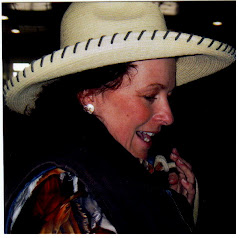My goal as an instructor is to enable you to be comfortable and relaxed while riding,
so your horse will be comfortable and relaxed with you.
Owners and riders tell me quite often they wonder why:
- their horse keeps throwing its head
- he won’t go forward
- he bucks or rears
- he spooks
- the horse’s trot is so hard to sit
- the horse can’t maintain the canter
- why he won't stretch to the bit
- the horse, rider or both are uncomfortable and not relaxed
Sometimes these issues may be health-related and you should have that looked into by your vet. But once any conformational or health related issues have been addressed and solved if the behaviors continue then we have to consider it could be and most likely has to do with the rider or lack of training. For the purpose of this article we are going to focus on the rider.
I view the picture of horse and rider as a whole partnership rather than looking at each issue separately. In most cases the causes of many of the issues listed above is the inability of the horse to move "completely" through his or her entire body because of a tight rider, a tight poor fitting saddle, poor postural habits or trying to fix issues with equipment and gadgets rather than connecting with the horses mind and helping him learn to control his emotions. The sole use of specialized equipment and gadgets is always based on the "people schedule" instead of the "horse schedule". In order for everything to function clear, smooth, relaxed and comfortable both bodies have to function in a full healthful way including physical, mental and emotional fitness. It is a wholistic approach where both the horse and rider must be developed in order to have a comfortable relaxed performance.
Riding is not always as easy as the experts make it look. It can be difficult to keep your balance and at the same time be effective with your aids. It can be hard for some people to stay upright and look good in the saddle.
When NOT looking good riders:
- bounce in the saddle
- their legs flap against the horses’ side
- their hands cling to the reins for balance
- they lean forward
- when giving a cue they bend their wrists, look down and again lean forward
- their heels come up
- their lower back stiffens
- The horse drops his shoulder, throws his head up and tightens his back
As I teach I have noticed that quite a few riders have difficulty keeping an upright posture through transitions and keeping their seat in the saddle at the canter. I have also observed that the trot is usually the most difficult movement to perform dignified and well.
There are many “roadblocks” which can hinder a horse’s ability to move completely through his entire body. But one of the most common "roadblocks" is a tight rider with a weak core. If you are double bouncing at the rising trot, sloppy in the sitting trot, unable to maintain an independent seat in any movement, unable to maintain a collected canter or if you are stiff and tight in your position you are more than likely weak in your abdominal and core muscles.
In order for the horse to carry a rider with a supple and working back,
the rider must:
- Become a conscious rider (Listening and observant of yourself, the horse, and the surroundings)
- Be able to control your mind and emotions (remain calm)
- Stay relaxed and flexible in mind and emotions
- Breath normally
- Be aware of your body and then the horse’s body
- Have “self-control” (physical coordination, and timing)
- Be in neutral pelvis position
- Have an aligned body (ear, shoulder, hip, heel)
- Stabilize through the abdominal core muscles
- Open your knees (clamped knees literally take you up and off the saddle making you vulnerable and unsafe)
- Think wide through the upper thighs and pelvic bowl (otherwise you are closing your hip joints and restricting motion)
- Let your legs be long draping around the horse like wet paper towels
- Release and contract as necessary for balance
- Remain flexible or supple especially in the shoulders, pelvis, and lower back
- Move in rhythmic harmony with the horse
These rider objectives will help improve your posture so you are in a position which allows the limbs to free up and work with the horse’s movement without being restrictive or limiting. The abdominal core muscles stabilize the upper body and support the back which allows the hips, lower back muscles and hamstrings to function independently without a lot of undue stress. Your core is what balances, contains and re-balances the horse and allows you to function within a dynamic and changing set of circumstances in the saddle. The core muscles also stabilize the neutral pelvis which is the foundation of your weight distribution and your balancing point.
Core stability gives a person deep abdominal strength and therefore better posture control and trunk stability. Horse riders NEED deep abdominal strength for riding. Nervous riders tend to cling onto their horse and bounce around. This creates tension in the horse and then the rider and then the horse and the cycle is set
If you core is weak it is no wonder you are tired or sore after riding. Without a conditioned core your body feels out of balance to your horse. Your body is constantly adjusting, re-adjusting and over working postural muscles which become injured over time. The horse does not feel you harmonizing with his movement but rather working against him like a ball and chain. He will not want to lift his back, instead he will hollow his back and you end up with a rough ride and real struggle. Your body becomes a drag on movement and you have to work extra hard to get lightness and forward impulsion.
One of the absolute keys for a comfortable and relaxed ride for both you and your horse is better core stability. A good rider has knowledge of their body and posture. This gives them confidence, strength, skills, and stability which allows them to achieve high level results.
So if you are feeling blue because you can’t get out and ride your horse because of the winter weather conditions then it might behoove you to set aside some time for strengthening your core because it is so important for horseback riding. It is the center of gravity and your body relies on it for proper posture and body functioning. It provides a solid foundation of movement for the rest of the body and injury prevention.
I would recommend Pilates or Yoga, however anything you do to become more aware of your body, increase your strength and flexibility, while learning to control your breathing will greatly benefit your riding this spring no matter what discipline you choose to participate in with your horse.
I want to encourage you to set as one of your goals this year to become a conscious rider who realizes that sensitivity and understanding of your body-mind connection are essential to riding. As you continue on this journey you will begin to understand that using your body to communicate with the horse is the essence of riding and your most challenging task.
COME TO OUR STUDY GROUP IN BROKEN BOW OR THE RIDING SIMULATION CLASS IN












